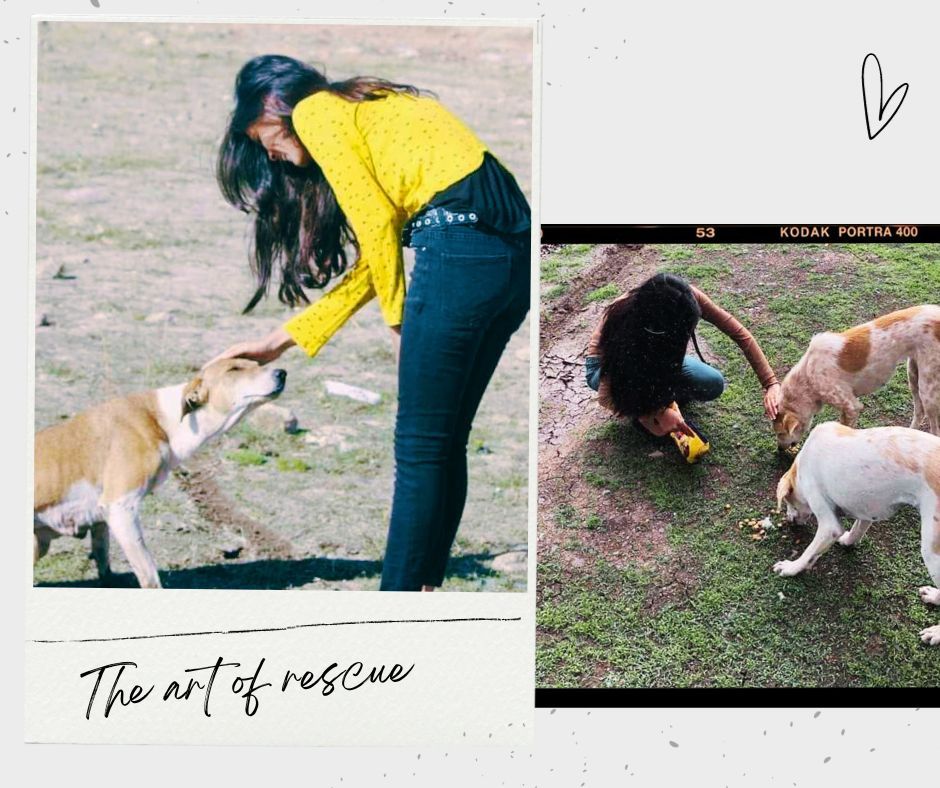Have you ever encountered a dire situation where an injured or ailing dog required immediate aid, but professional assistance was not readily available? This experience is not uncommon.
Dog lovers should not feel powerless. In this guest post by Priyanka, we’ll explore how to rescue stray dogs, even when help is not readily available.
Rescuing stray dogs: Aiding a Dog in Distress
Lax laws for animal rights and the shelters can’t cover for the dogs burdened with illness, injury, and cruelty. Yet, in the depths of their being, lies an undeniable beauty, eager for recognition and tender care to heal and survive.
There may come a time when a dog requires immediate assistance, and neither professional help nor a veterinary clinic is readily accessible. Equipping yourself with dog first aid can transform a desperate situation into a calculated rescue mission.
In remote areas, people encounter significant hurdles when it comes to prompt assistance for distressed dogs. Waiting for Vets, NGOs or animal control agencies can result in undue delays exacerbating the suffering of the animal.
Maintaining a composed demeanour is paramount. Approach the distressed canine with a soothing and unwavering voice, sidestepping abrupt gestures that could further unsettle the animal. Allow the dog to observe you from a cautious distance before any closer approach. Employing alluring treats and gradual movements, you can foster trust.

Safely Rescuing a Terrified Stray Dog
Rescuing a frightened stray dog necessitates a gentle and cautious approach, placing their safety and comfort at the forefront. Begin by observing the dog from a distance. Do not approach the dog directly, as it may become more frightened. Instead, follow the dog discreetly to see where it goes, as it may lead you to one of its safe spots. Prioritise your safety by wearing gloves to shield your hands from any possible bites or scratches.
Dogs are social animals, and trust is key. Make sure the dog sees you as a non-threatening presence. Be patient and let the dog approach you when it’s ready. Keep giving treats to strengthen positive connections.
Approach the dog calmly, avoiding sudden movements or loud noises that could escalate their fear. Extend a soft towel or blanket, offering a cocoon of security for the apprehensive canine.
To build trust, do not make direct eye contact but talk gently and offer your hand for them to sniff. If you can, close off any ways for them to run away and lead the dog calmly to a secure area where you can keep it safe.
Carry a generous supply of dog treats to both entice and reward them throughout the process. If possible, use a makeshift leash fashioned from a piece of rope for controlled movement. Once secured, ensure a comfortable, safe environment, along with fresh water and nourishment.
This patient and empathetic approach allows the scared stray to gradually rebuild trust, heralding the beginning of a brighter chapter in their journey.
Carefully lift the dog, using the towel or blanket to protect yourself and the dog from potential bites or scratches. Place the dog in a secure, comfortable transport carrier or a vehicle.
Keep animal control or rescue group contact info nearby in case you need assistance.
What not to do while rescuing stray dogs?
Your mission of rescuing an injured dog demands thoughtful contemplation. Here, we shed light on the vital considerations to help recovery of the distressed canine and its rehabilitation journey.

Avoid Chasing the Dog: Chasing a frightened stray dog can escalate fear and aggression, potentially putting the dog in dangerous situations like traffic.
Minimize Loud Noises: Steer clear of sudden loud noises, abrupt movements, or shouting, as these can heighten the dog’s fear.
Avoid Cornering the Dog: Refrain from backing the dog into a corner or forcing it into a confined space without a clear exit. This can intensify feelings of being trapped and lead to defensive reactions.
Gentle Approach is Key: Never attempt to grab or restrain the dog suddenly. Instead, use a towel or blanket to gently cover the dog, providing a sense of security.
Sideways Approach: Approach the dog from the side rather than head-on to appear less threatening. Gradually move towards the rear if the dog seems more at ease.
Don’t Assume Friendliness: Even if the dog looks small or seems non-threatening, it may still be frightened, exhibiting unpredictable behaviour. Always exercise caution.
Persistence Pays Off: Building trust with a scared dog takes time. Stay patient and persistent, and don’t hesitate to seek help from professionals when needed.
Remember, this blog post isn’t about taking on full responsibility alone. It’s about knowing when to act when waiting for animal control isn’t the best option. Every dog lover should have this knowledge, because nobody wants to see a dog in pain. Sometimes, you have the power to make a positive difference on your own.
And if you can, please consider choosing to adopt a desi dog. It is not just a decision, it’s a celebration of uniqueness and a testament to the power of love. These one-of-a-kind companions bring joy, loyalty, and boundless affection into our lives. Let’s open our hearts and homes to these incredible souls, for in their diversity lies their beauty. Together, let’s make a difference, one paw print at a time!
Animals have a keen sense for genuine care. Those who truly care are the best candidates for taking care of them.

Hats off to this incredible work!!!